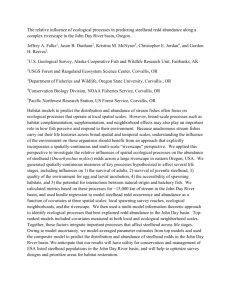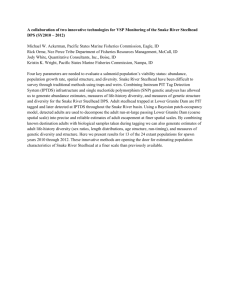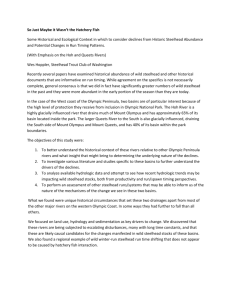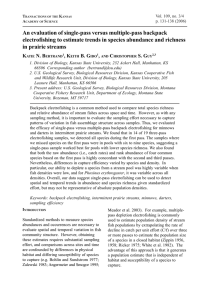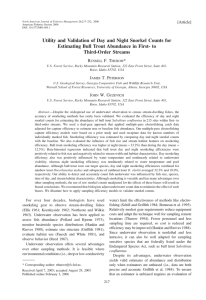Constable_SthdManagersMeetingAbstract
advertisement
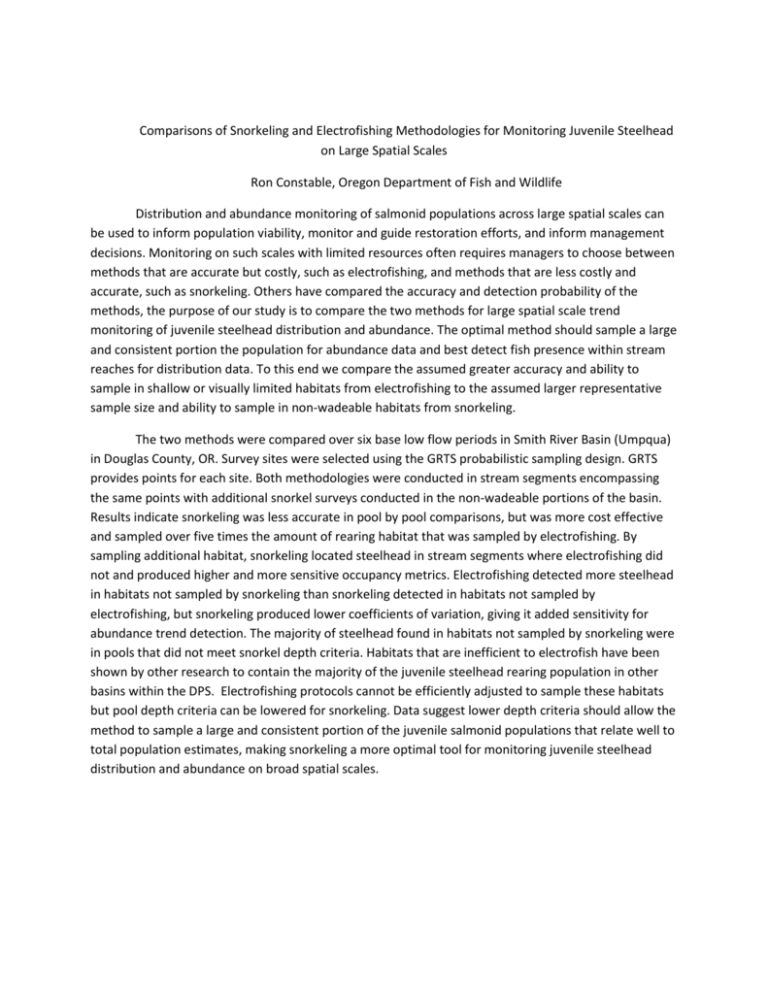
Comparisons of Snorkeling and Electrofishing Methodologies for Monitoring Juvenile Steelhead on Large Spatial Scales Ron Constable, Oregon Department of Fish and Wildlife Distribution and abundance monitoring of salmonid populations across large spatial scales can be used to inform population viability, monitor and guide restoration efforts, and inform management decisions. Monitoring on such scales with limited resources often requires managers to choose between methods that are accurate but costly, such as electrofishing, and methods that are less costly and accurate, such as snorkeling. Others have compared the accuracy and detection probability of the methods, the purpose of our study is to compare the two methods for large spatial scale trend monitoring of juvenile steelhead distribution and abundance. The optimal method should sample a large and consistent portion the population for abundance data and best detect fish presence within stream reaches for distribution data. To this end we compare the assumed greater accuracy and ability to sample in shallow or visually limited habitats from electrofishing to the assumed larger representative sample size and ability to sample in non-wadeable habitats from snorkeling. The two methods were compared over six base low flow periods in Smith River Basin (Umpqua) in Douglas County, OR. Survey sites were selected using the GRTS probabilistic sampling design. GRTS provides points for each site. Both methodologies were conducted in stream segments encompassing the same points with additional snorkel surveys conducted in the non-wadeable portions of the basin. Results indicate snorkeling was less accurate in pool by pool comparisons, but was more cost effective and sampled over five times the amount of rearing habitat that was sampled by electrofishing. By sampling additional habitat, snorkeling located steelhead in stream segments where electrofishing did not and produced higher and more sensitive occupancy metrics. Electrofishing detected more steelhead in habitats not sampled by snorkeling than snorkeling detected in habitats not sampled by electrofishing, but snorkeling produced lower coefficients of variation, giving it added sensitivity for abundance trend detection. The majority of steelhead found in habitats not sampled by snorkeling were in pools that did not meet snorkel depth criteria. Habitats that are inefficient to electrofish have been shown by other research to contain the majority of the juvenile steelhead rearing population in other basins within the DPS. Electrofishing protocols cannot be efficiently adjusted to sample these habitats but pool depth criteria can be lowered for snorkeling. Data suggest lower depth criteria should allow the method to sample a large and consistent portion of the juvenile salmonid populations that relate well to total population estimates, making snorkeling a more optimal tool for monitoring juvenile steelhead distribution and abundance on broad spatial scales.

